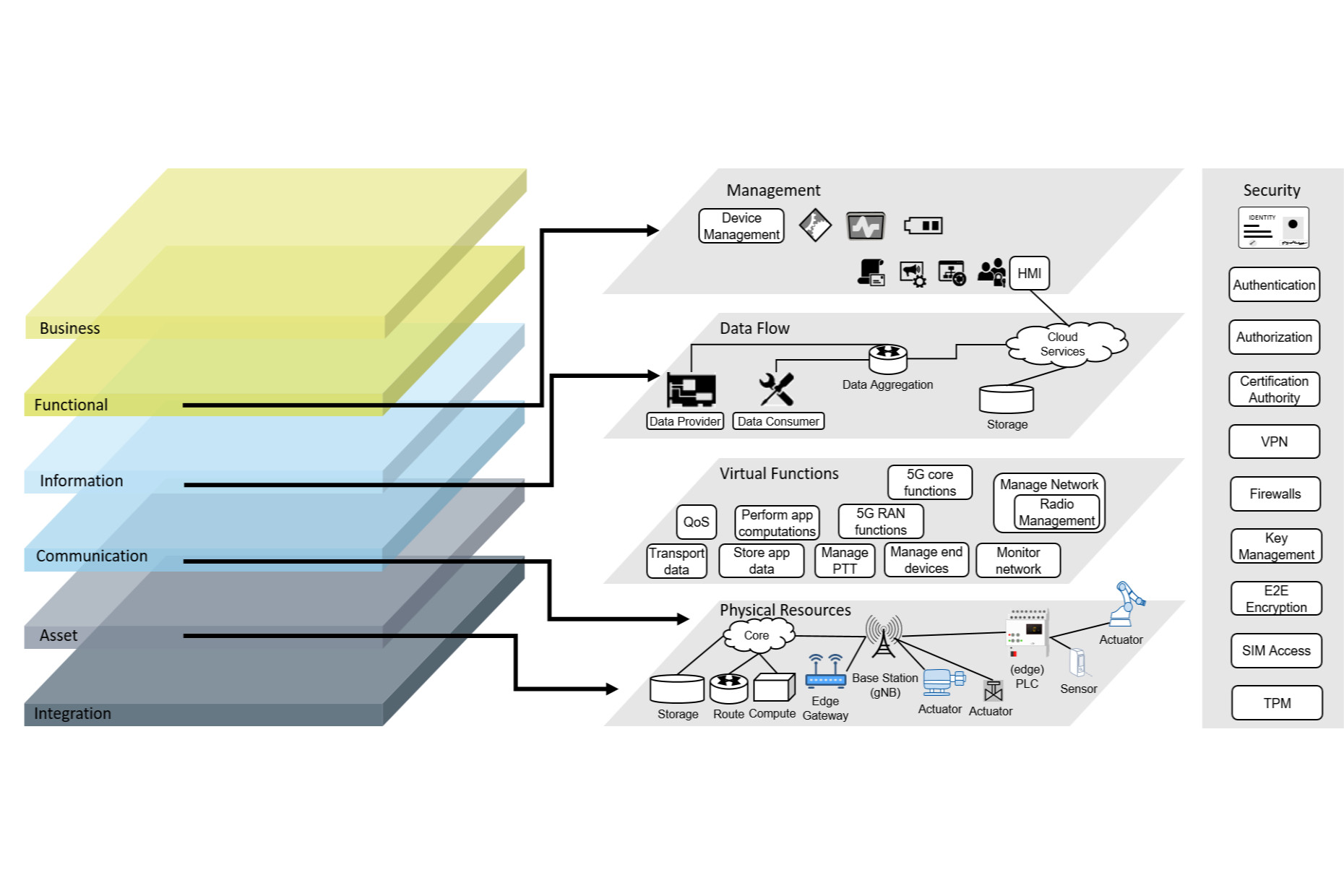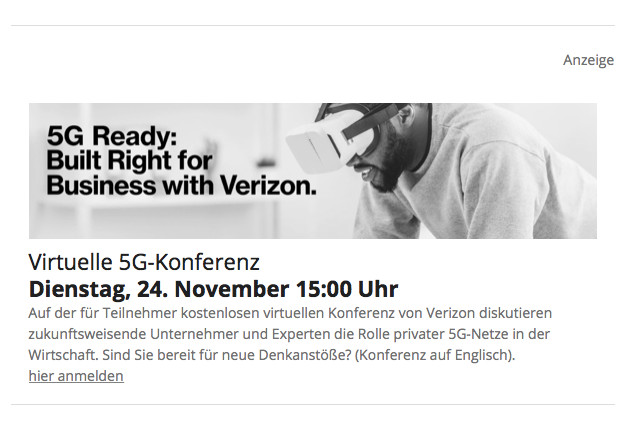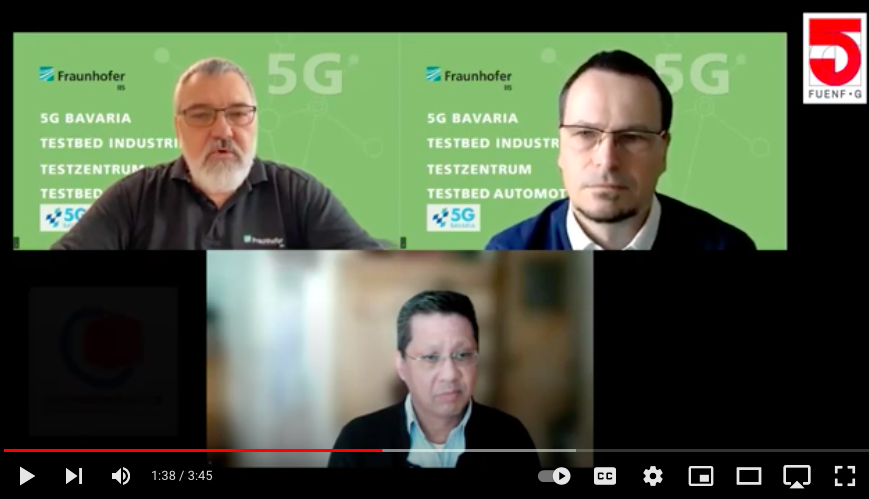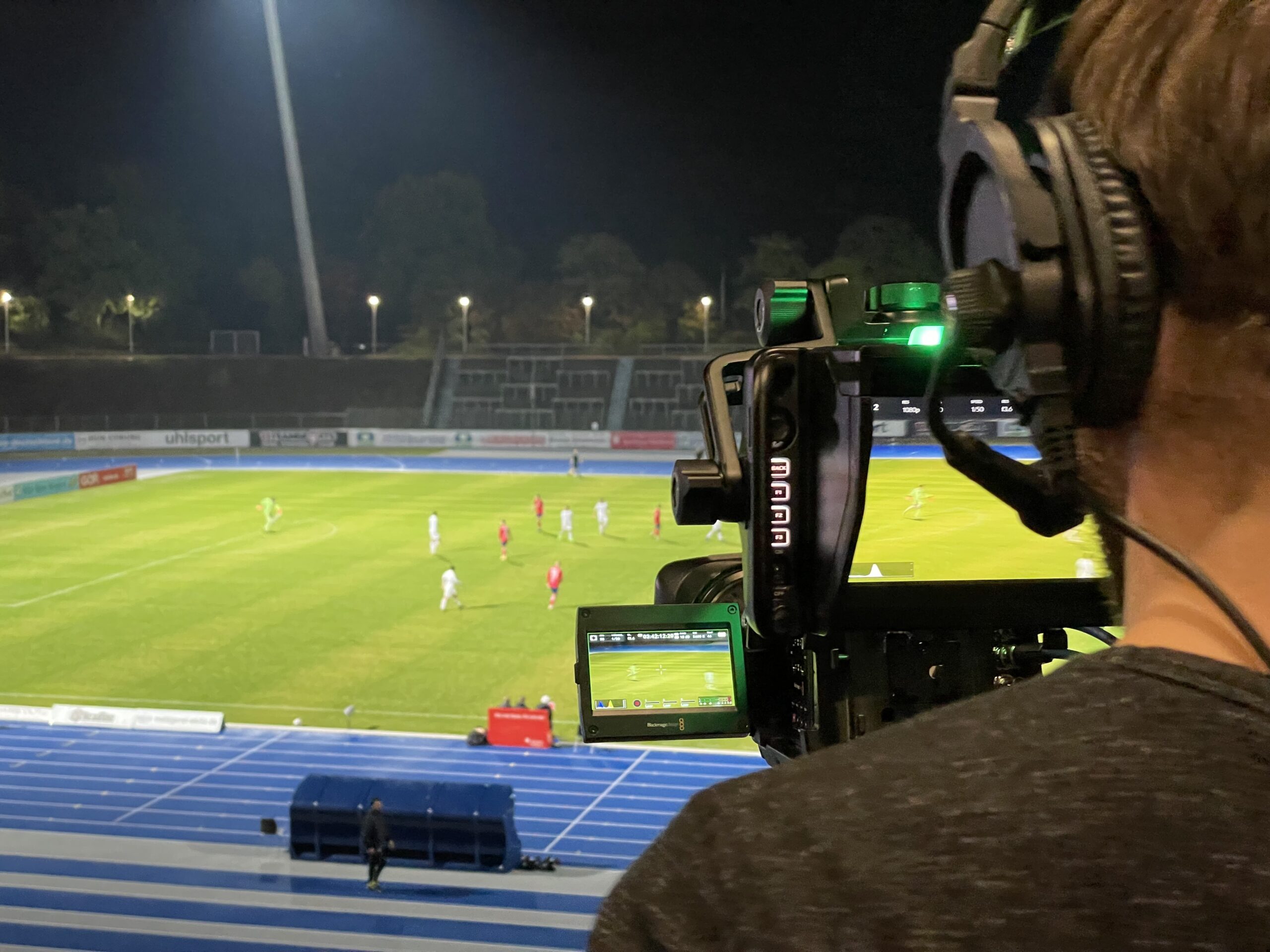The project 5GANG is concerned with an architecture for resilient, industrial communication based on 5G technologies. (Picture: 5GANG)
In the recently completed project 5GANG, eight industrial partners have developed an architecture for resilient, industrial communication. Based on 5G technologies, a campus network has been implemented and validated as a demonstrator that explicitly shows the structures of a Smart Factory with 5G.
From March 2017 to November 2020, Ericsson, Robert Bosch, Sick, Schildknecht as well as the Research Institute for Rationalization (FIR) and the Machine Tool Laboratory (WZL) at the RWTH Aachen University and the TU from Dresden and Kaiserslautern worked together to research and develop an industrial communication concept of technologies of the 5th Mobile Generation (5G).
The focus of the cooperation is the application of 5G radio and network technology in production and the efficient networking of a large number of sensors in order to be able to realize practical use cases in the context of Industry 4.0 – from detailed condition monitoring of a plant, to predictive maintenance, to the detection of anomalies in ongoing production.
“5G applied in industry has explored the enormous possibilities in industry through new applications and made them tangible through demonstrators.”
Martin Stümpert, 5GANG Verbundkoordinator
Results of the project partners for the industry
Important findings from the project are, besides the created communication architecture, the transformation of wired sensors and actuators to 5G-based sensor systems. The integration of industrial solutions in 5G Campus networks as well as the requirements and use cases for future 5-based industrial production systems also provide the partners of the project with revealing calls for action.
Important in massive sensor networks are the results on Compressed Sensing and Distributed Source Coding and Network Coding for a more energy efficient and reliable data transmission. In addition, the experiences of 5GANG also ensure more connectivity in a distributed production environment. The network structure can also be significantly improved with industrial IoT gateways for protocol tunneling of standardized fieldbus systems over a 5G campus network.
“In the next few years, it will become clear that the lack of investment in 5G will become a serious competitive disadvantage.
Martin Stümpert, 5GANG network coordinator
Need for research on the cloud
There is also a need for further research on orchestration of the cloud environment, operation and maintenance of 5G equipment, and the connection of local data centers/industrial clouds to central data centers. Standardized hardware can be used to better aggregate the data of various applications in a local cloud.
Ericsson is using the results to define further research projects, in particular to further develop industry compliance. In the long term, one product could be the development of an industry cloud, in which computers unite industrial applications that were previously distributed on different servers. For Bosch, the algorithms researched in the 5GANG project and their integration into a corresponding platform offer a good foundation for further advancing the research and development of condition monitoring, predictive maintenance and anomaly detection. For Schildknecht, the results offer an optimal opportunity to develop new products and business models and to implement them with the partnerships established
Contact the network coordinator
Martin Stümpert
Ericsson Allee 1
52134 Herzogenrath
Germany
email: martin.stuempert@ericsson.com










Leave A Comment